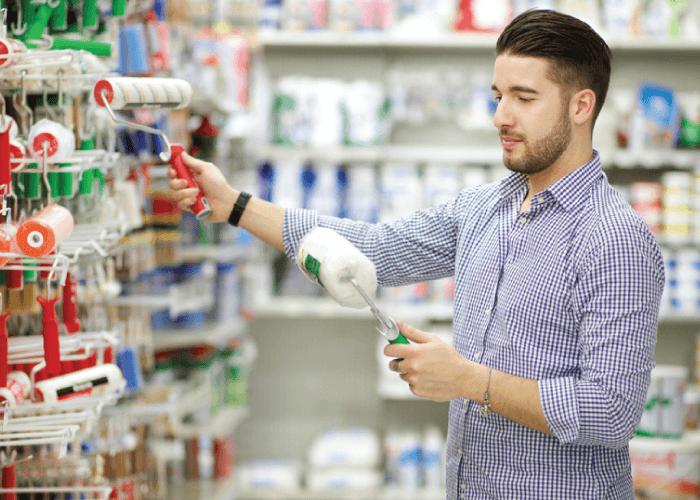3 Brand Perception Questions that Reveal What Shoppers Think

On this page
The customer is always right. If you haven't heard this phrase, you're probably not a retailer. Shoppers want to feel valued and enjoy efforts made on behalf of the retailer. This is what differentiates you from the competition.
''At the end, it all comes down to how well you sell your product. Many will sell the same product, some even at a better price. The trick isn't to sell it cheaper, but to sell it better,'' says Craig Jackson, marketing writing expert at UKBestEssays.
Every good retailer knows this 'secret' of the sales world. Because of it, 89 percent of companies globally seem to get the hang of it and use customer experience to rise above their competition. With a number as grand as this one, you must wonder: 'Why haven't I tried it yet?'
How to Improve Customer Experience
If you haven't, it is about time to start. Improving customer experience is essential for boosting sales and there are many simple things that can help you achieve it, most of them at no cost at all. One of those things is evaluating brand awareness and improving it.
When you know of customers' perceptions from the moment they set foot in your store, you can do your best to fit your strategies toward those perceptions. But, for starters, you need to implement a brand perception survey and first gather this information.
Questions to Ask in a Brand Awareness Survey
Brand awareness surveys are very popular in the retail industry and any other industry for that matter. They have a history of providing you with the information needed to best sell the brands, products and services you are selling.
Every brand awareness survey is individually created based on your particular retail business, but there are three questions that should be included in every survey you create.
1. How Do You Feel About My Brand?
Asking this question will help you come to many conclusions. This might be the only question of an open-ended kind you will include in your survey, but it is an essential one. By allowing customers to decide what to say and how to say it, you can determine the following:
Get overall measurements of their likes and dislikes. By gathering those responses and classifying them into different categories, you can see what the overall opinion is about your brand. Make a group for negative, positive, and neutral answers to these questions and you will begin to understand how well you are doing.
Determine if your brand is recognized. The positive and negative answers to this question will indicate that people know and either love or hate your brand. But, they will mean that your brand is recognized. Neutral comments, on the other hand, mean that people don't really know your brand and therefore cannot form their own strong opinion. It is the number of these comments you should worry most about. Negative comments can be fixed by making amends with your brand, while for the neutral you need a change in marketing strategy.
Learn new ways of improving the user experience. Asking this question will help you learn what you are doing wrong, what needs improvement, and how to improve the user experience. You might not think of it this way now, but what customers tell you about your retail brand is essential in making the right choices in terms of selling product.
Think of this question as your magic trick. By getting to know how people feel about your brand and the way you sell to them, you can use their words to transform an entire marketing strategy.
Apple is a marvelous example of such smart strategies. Did you know that they spend approximately $1 billion per year on their retail store despite the fact that they have an excellent online presence? They use surveys to improve retail store experience and always have delighted customers who are happy with the way retail stores look and function.
2. Would You Recommend My Brand to Others?
The first question told you what you needed to know about how aware people are of your brand, but now it is time to ask how happy they are with it.
Have you heard of NPS? NPS or Net Promoter Score is a measure of how satisfied your customers are on a scale of -100 to +100. The numbers are very wide, meaning that even a number slightly above the zero is technically good. However, if you want to be great, you will need a score of over 50.
In fact, online retailers find good scores start at 56.
To be able to see where your business stands on this scale, you need to ask your customers whether they would recommend your brand to others. Of course, this question won't require a scale of 200 different numbers. A simple scale of 0 to 10 is perfectly good. 0 signifies the customer is least likely to recommend, while 10 signifies that he or she is most likely to recommend your business.
Shoppers who rate your brand 0-6 are consider 'detractors,' while shoppers who rate your brand 9 or 10 are considers 'promotors.' 'Passives' are those shopper who rate your brand either 7 or 8. Your NPS score is simply calculated by subtracting the percentage of customers who are detractors from the percentage who are promoters.
To make their customers feel valued and acknowledge their opinions about the brand, Apple follows up with some of the customers who score the company lower than 6 on the survey. They even display comments from their customers in the break room to teach the employees and managers how to improve their work.
Once you discover what your customers truly want based on this survey question, you can make the changes they demand. In the eyes of customers, these changes are required, and making them will be easily noticeable. With it, your efforts and continuous desire to improve will be acknowledged. Taking steps that capture the essence of what customers need is always better than taking grand steps they don't really care about.
This is where the survey can help you. By telling you whether they like your brand and why they like or dislike it, you can get the assistance from your customers and make them feel like they are part of your strategies.
Most of the time, customers will know better than you do what your target audience needs. After all, they are part of that audience themselves. Listen to what they have to say.
3. Which Brand Do You Prefer?
The third question you must include in your survey is a way to see how your brand fits into the market, as well as check the competition. Customers who answer this question will tell you whether you are successful in the market, who the competitor is you need to learn from, and what competitors you should see as a bad example.
You can either ask this question in the form of an open-ended question or provide a list of multiple choices. If you decide on the latter, you can pinpoint the biggest competition you have and see whether you are more or less successful than they are.
When you have the results, you have the solution for improving your retail business. The ones with low preference are those you can look into, but definitely should not learn from or copy strategies from. The ones with higher preference are those you learn from and constantly follow to see how they attract the audience.
If you are selling more than one brand, you can include this question by asking which of your brands shoppers prefer and which ones they don't. By knowing this, you can know how to focus your strategy and take it on the right path. You can then adjust the offers, prices, and marketing accordingly.
For example, if one brand turns out to be very unpopular with your customers, you might want to add a discount to entice them to buy it. Customers love discounts and loyalty programs and such products will be the best ones to add to those programs. The products that sell most will be bought by your customers regardless of these strategies. So, your goal is to focus on providing them constantly and attempt to sell the rest by using marketing incentives.
Research, following trends, business intelligence, and analytics all make for an improved marketing strategy. As a result, you can reach more customers and improve shopper experience. These questions are essential measurement tools you should consider.
About the writer: Warren Fowler's lifestyle is full of hiking adventures. When he's not busy with his guitar or enjoying a sunny day outside, he excels at blogging skills and scrolls through social media. You can meet him on Twitter and Facebook.
Join the #retail, #inspiringretail and #SmartStore conversations on Twitter @RetailNext, as well as at www.facebook.com/retailnext.
About the author:

Warren Fowler




